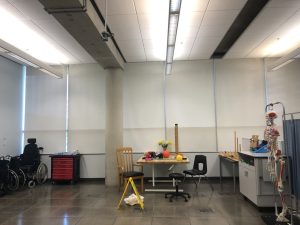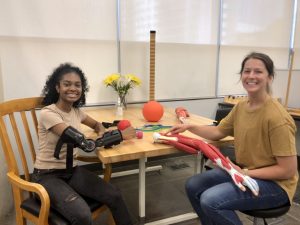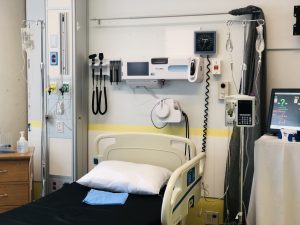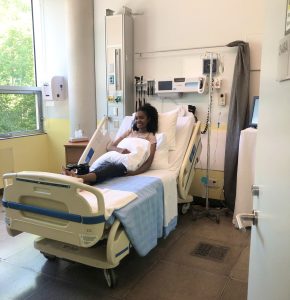Filming Location
The filming location is any area that may look similar to the focus of your virtual gaming simulation, such as a nursing lab, or an area that can be set-up to simulate the clinical environment of your scenario.
When choosing your location, reflect on the following questions:
- Where will the filming take place? Do you need one or multiple locations?
- What type of lighting is in the room? (e.g., natural, overhead lights, sensors)
- What is the size of the room? Remember it needs to be big enough for the film crew and their equipment, in addition to the actors and directing team.
- What is the sound quality of the room?
In the video Composition + Framing – Storytelling with Cinematography by Simon Cade from DSLRguide provides various guidelines to help you to view your location from a different perspective when preparing to film your virtual gaming simulation:
If you work in post-secondary education, you may have lab spaces in which you can film. For example, at Centennial College there are multiple labs available for educators and students to practice their skills. For example, Centennial has nursing, paramedic, occupational therapy, physiotherapy, food management, esthetic, and massage labs. The labs can be used as potential filming sites for a virtual gaming simulation. The Centennial lab team assists staff with booking the room and equipment, as well as setting up the site.
The below images are the film locations we used for the virtual simulation An Interprofessional Virtual Gaming Simulation: Breaking the Chain of Transmission.




Some health organizations have simulation rooms that can be used for filming or an alternative option is to collaborate with a academic institution or rent their lab space. Centennial, as well as many other academic institutions, partnered with health organizations to create virtual gaming simulations.
Educator Tip
Filming Location and Use of Equipment
The Health Studies Lab and Simulation team at Centennial College is the  behind the scenes team that helps to source and purchase equipment and supplies used in everyday labs. The supplies and equipment used onsite simulate a hospital environment as realistically as possible. The equipment helps to enhance the film set. For example, we have real hospital equipment or simulated equipment on hand and ready to use. As the lab team purchases all of the simulated equipment, we are also the equipment experts. We explain the equipment to faculty and students and in some cases even help students understand how the equipment is utilized in a real world setting.
behind the scenes team that helps to source and purchase equipment and supplies used in everyday labs. The supplies and equipment used onsite simulate a hospital environment as realistically as possible. The equipment helps to enhance the film set. For example, we have real hospital equipment or simulated equipment on hand and ready to use. As the lab team purchases all of the simulated equipment, we are also the equipment experts. We explain the equipment to faculty and students and in some cases even help students understand how the equipment is utilized in a real world setting.
~ Carly Lepoutre and Sajee Shan, Health Studies Laboratory and Simulation Technicians at Centennial College
Insights from the Student Team
As healthcare students, there are many potential clinical placement opportunities and it can be overwhelming when starting in a new environment for the first time. Creating realistic locations in a virtual gaming simulation (VGS) can help students safely orient to a variety of healthcare environments. For example the virtual simulation Hello, you must be Flo! is set in a client’s home. Another virtual simulation called Caring Off Duty VGS was filmed outside on the street where an accident occurred. Another example, is the Interprofessional Virtual Gaming Simulation: Breaking the Chain of Transmission, which starts off in a rehabilitation unit and then moves to a client’s room in a surgical unit.
The various VGSs demonstrate how the choice of the filming location can provide a realistic setting for the student learners. A realistic setting can make the learning experience come to life when the setting relates to the context of the simulation. An authentic location can support students’ knowledge and confidence in transitioning to future clinical placements and work settings. The location of a VGS can help students understand their role and how a real-life practice setting may function.
Starr Ferguson shared “during the pandemic it was challenging to learn nursing skills as classes were virtual. The virtual gaming simulation played an essential role in our nursing curriculum. It helped us to become more familiar with different healthcare settings by providing a variety of virtual learning experiences to explore and bring familiarity to clinical.”

